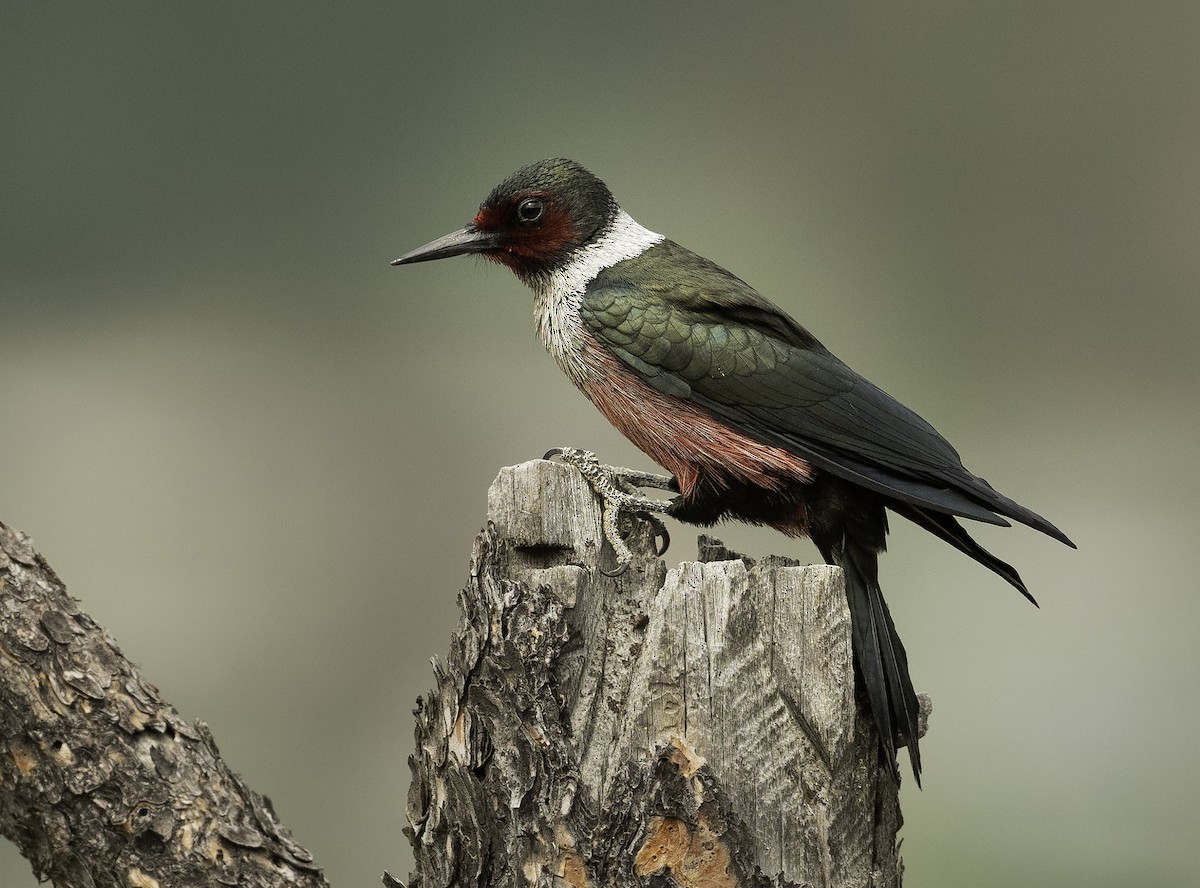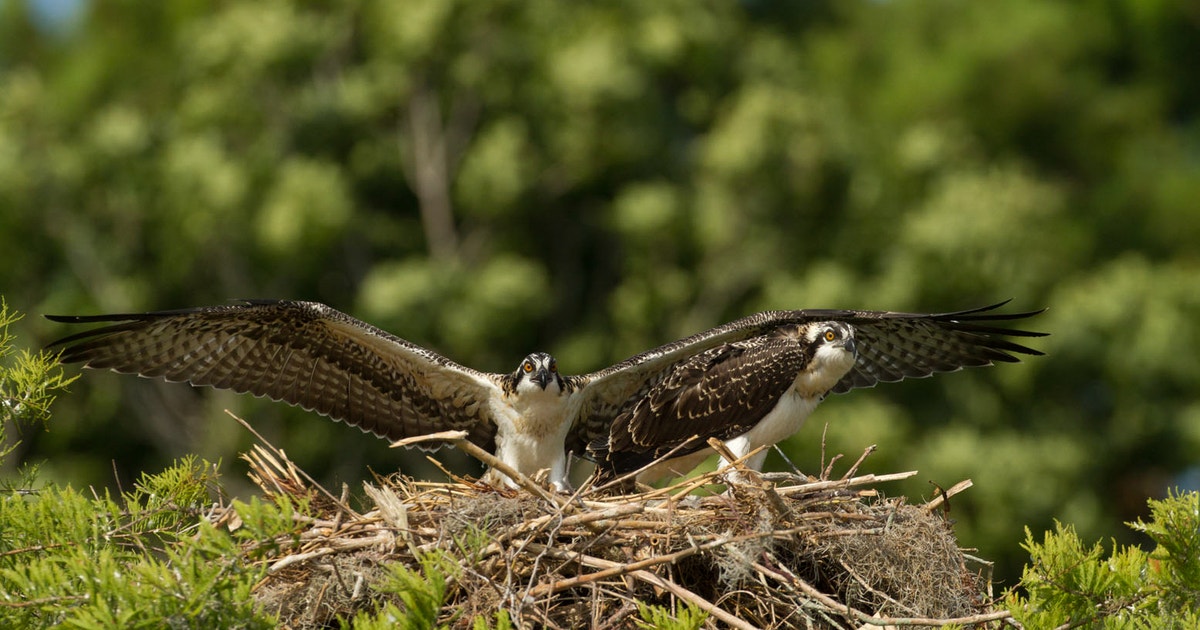If you had the opportunity to name the species pictured above what would you call it? Something descriptive about its plumage or habitat preferences, or maybe a notable behavior?
Common names for birds help us to appreciate their special, singular qualities. A name can increase our understanding of a species (for example, the Snail Kite is named for its diet of almost exclusively snails) and even spark our imagination (consider Shining Sunbeam, Rainbow Starfrontlet, Spectacled Spiderhunter, or Firewood-gatherer).
In contrast, a common name that doesn’t describe a bird well can make it harder to identify and remember. Some bird names can even cause unintended harm and exclusion by carrying associations with historic injustices.
These are several of the reasons given by the American Ornithological Society (AOS)—the organization responsible for maintaining the Checklist of North American Birds—as part of its recently-announced commitment to “changing all English-language names of birds within its geographic jurisdiction that are named directly after people (eponyms), along with other names deemed offensive and exclusionary, focusing first on those species that occur primarily within the U.S. or Canada”. Read the full AOS Council statement announcing these commitments and go inside the AOS recommendation to change eponymous bird names on All About Birds.
Fast Facts
When is this happening? The timing is still to be determined. The AOS will first develop a pilot process with a small number of species, then addresses changes on a rolling time frame. No changes will happen on eBird, Merlin, or other Cornell Lab projects before the next annual taxonomy update in October 2024.
How many species? The AOS Ad Hoc Committee on English Bird Names recommended changing all English bird names within the AOS purview that have been named after people, plus three additional names. This would include 152 English names on the list within the North American Classification Committee region and 111 additional ones covered by the South American Classification Committee (in total, about 5.5% of English bird names that AOS oversees). The first focus will be 70-80 species in the U.S. and Canada, recognizing the need to engage in broader conversations in Latin America before proceeding with name changes there. Read the committee’s full set of recommendations.
How will new names be decided? The American Ornithological Society will establish a new committee to oversee the assignment of all English common names within its geographic purview. The committee will include individuals whose expertise represents the social sciences, communications, ornithology, and taxonomy.
Additionally, the AOS has committed to actively involving the public in the process of selecting new names. Which means that, over the next few years, you’ll likely have a chance to weigh in on what eBirders in the US and Canada call this species, or this one.
Where can I learn more? Additional information can be found in the Ad Hoc English Bird Names Committee’s Final Report, as well as the English Bird Names Project FAQ and FAQ: Changes to Eponymous Bird Names on All About Birds.
What does this decision mean for eBird, Merlin, Birds of the World, Macaulay Library, and other Cornell Lab projects?
The taxonomy used by projects at Cornell Lab of Ornithology, the eBird/Clements Taxonomy, is a consensus taxonomy that has generally deferred to regional authorities for classification and nomenclature. For species occurring within the Americas, the eBird/Clements Taxonomy has followed the AOS’s Checklist of North and Middle American Birds and Checklist of South American Birds.
When these regional checklists are revised by their respective committees, they generally change in the eBird/Clements taxonomy as well, with minor exceptions (e.g., if the recommendations of two committees differ). We incorporate these revisions once per year during our annual Taxonomy Update. Therefore, no changes will be made to English common names in the eBird database until October 2024 at the very earliest.
This announcement only pertains to the English common names of eponymous birds (birds named after people) occurring primarily within the AOS’s geographic purview. English names in other regions will continue to be determined in consultation with partner organizations in those regions. If you use one of eBird’s more than 95 regional language variations, you may not notice any change at all. Likewise, scientific names are not impacted by this decision.
What would you name the quail pictured above? eBirders may soon get to weigh in on revised English common names for this and other species in the US and Canada that are currently named after people.
There are still many details to work out. A timeline has not been set, nor have any new names been decided. The AOS will next be launching a pilot to “work out the logistics of undertaking this significant effort.” Our teams at the Cornell Lab are supportive of this process and optimistic that it will result in a net benefit to birding over time. We feel that giving birds names that describe and honor the organism itself has the potential to make birding accessible to more people.
Nevertheless, we acknowledge the tremendous impact of this decision in terms of both positive opportunities and the potential challenges. Taxonomic institutions routinely rename birds for scientific reasons, but never before have so many names been slated to start the process of revision at once. Changes of this magnitude are often hard; learning new bird names itself can be difficult and confusing.
Fortunately, our technology platforms today make it easier to learn and use new bird names than ever before. eBird and Merlin are committed to leveraging our existing tools and resources, especially multiple variations of common names, to helping birders in the AOS region adapt to these changes. (We were able to adjust from Gray Jay to Canada Jay, after all!) We are excited for the opportunity to engage a large and diverse community of voices to generate bird names that are easier to learn, remember, and identify with.



